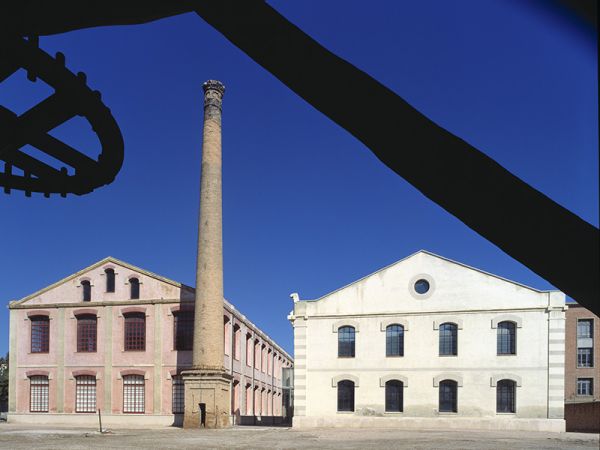The roar of water, the smells, the noise made by horses and carts, and the sounds of workers coming and going, that was the backdrop to be heard continuously from the end of the 18th century along the
water canal in Igualada when the
new tanneries were being built.
Pay a visit to the town's industrial past, associated with the production of hides and wool, with a visit to the
Igualada and Anoia district's Museu de la Pell (hide museum). Established in 1954, it is one of the
first museums devoted entirely to tanning in Europe. The museum is spread over two buildings:
Cal Boyer, its main premises, and
Cal Granotes.
CAL BOYERCal Boyer is a f
ormer textile factory and is where the museum now has its main facilities. Here you will see many
items made from leather as well as the tools and machines used for
treating hides in Igualada. Be sure not to miss the 'People and Water' section, which gives a overview of the qualities of water and its uses. There is also an
experimental water canal that shows the ways in which water can be harnessed to produce energy for industrial purposes.
CAL GRANOTESCal Granotes is a
17th-century tannery right in the heart of the Rec district and here you can witness all the
crafts associated with the treatment of hides. It still has the two floors that characterise
pre-industrial tanneries. The first, the
lower floor, where all the
procedures were carried out to prepare and treat the skins, and the second,
where the hides were hung to dry from bars.
THE TANNING DISTRICT OF THE RECAfter visiting the museum, why not take a tour around the
tanning district of the Rec with its water canal? The tannery facade still has its characteristic
buttresses, and the its
stepping stones, tanks,
sinks and sluices can still be seen.
Have we managed to inspire you? If you have any other interesting suggestions please send them to us on Facebook or publish your photos on Instagram with the hashtag #patrimonicultural 